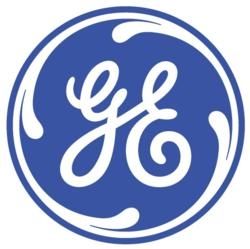Tue, Apr 21, 2015
FAA Certified The Part In February
The GE90 engine, which was the first jet engine to utilize composite fiber polymeric material on the front fan blades 20 years ago, achieved another milestone ... becoming the first GE engine to incorporate an additive manufactured component for the housing on the T25 sensor.

The FAA granted certification of the T25 engine sensor for the GE90-94B engine in February. The upgraded T25 sensor, located in the inlet to the high pressure compressor, is being retrofitted into more than 400 GE90-94B engines in service. The T25 sensor provides pressure and temperature measurements for the engine’s control system.
“Additive manufacturing has allowed GE engineers to quickly change the geometry through rapid prototyping and producing production parts, saving months of traditional cycle time for the T25 sensor housing without impacting the sensor’s capabilities,” said Bill Millhaem, general manager of the GE90/GE9X engine program at GE Aviation.
The T25 sensor housing is just the start of additive manufacturing at GE Aviation. Several next-generation engines currently in development will incorporate the advance manufacturing technique. On the LEAP* engine for narrowbody aircraft and the GE9X for the Boeing 777X aircraft, GE Aviation will produce part of the fuel nozzles with additive manufacturing.
Additive manufacturing represents a significant technology breakthrough for GE and the aviation industry. Unlike traditional manufacturing methods that mill or cut away from a metal slab to produce a part, additive manufacturing (also called 3D printing) "grows" parts directly from a CAD file using layers of fine metal powder and an electron beam or laser. The result is complex, dense parts without the waste, manufactured in a fraction of the time it would take using other methods.
Additive manufacturing has many advantages. It allows GE to design parts with unique geometries that were impossible to create using traditional machining methods. These additive manufactured components can reduce part count by replacing assemblies with single parts and can be lighter than previous designs, saving weight and increasing an engine’s fuel efficiency.
More News
Aero Linx: JAARS Nearly 1.5 billion people, using more than 5,500 languages, do not have a full Bible in their first language. Many of these people live in the most remote parts of>[...]
'Airplane Bounced Twice On The Grass Runway, Resulting In The Nose Wheel Separating From The Airplane...' Analysis: The pilot reported, “upon touchdown, the plane jumped back>[...]
"Burt is best known to the public for his historic designs of SpaceShipOne, Voyager, and GlobalFlyer, but for EAA members and aviation aficionados, his unique concepts began more t>[...]
"Polaris Dawn, the first of the program’s three human spaceflight missions, is targeted to launch to orbit no earlier than summer 2024. During the five-day mission, the crew >[...]
There Are SO Many Ways To Get YOUR Aero-News! It’s been a while since we have reminded everyone about all the ways we offer your daily dose of aviation news on-the-go...so he>[...]
 ANN's Daily Aero-Linx (05.04.24)
ANN's Daily Aero-Linx (05.04.24) NTSB Final Report: Quest Aircraft Co Inc Kodiak 100
NTSB Final Report: Quest Aircraft Co Inc Kodiak 100 Aero-News: Quote of the Day (05.04.24)
Aero-News: Quote of the Day (05.04.24) Aero-News: Quote of the Day (05.05.24)
Aero-News: Quote of the Day (05.05.24) Read/Watch/Listen... ANN Does It All
Read/Watch/Listen... ANN Does It All



